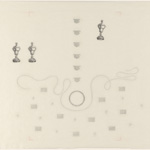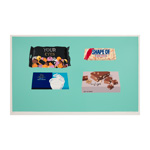Both exhibitions are curated by Miya Tokumitsu, Donald T. Fallati and Ruth E. Pachman Curator of the Davison Art Collection. Please see details about each of the exhibitions below.
The Pruzan Art Center's Goldrach Gallery is located at 238 Church Street in Middletown, between Wesleyan’s Olin Memorial Library and the Frank Center for Public Affairs, and is open Tuesday through Saturday from 12:30pm to 4:30pm during the spring and fall semesters of the academic year. Admission is free.
The Davison Art Collection holds more than 25,000 works of art on paper, including prints, photographs, and drawings. The print collection is one of the foremost at a college or university in the United States. The collection supports teaching and learning in many ways, and was established at Wesleyan University with the founding gifts of George Willets Davison, class of 1892. For more information, please visit www.wesleyan.edu/dac.

